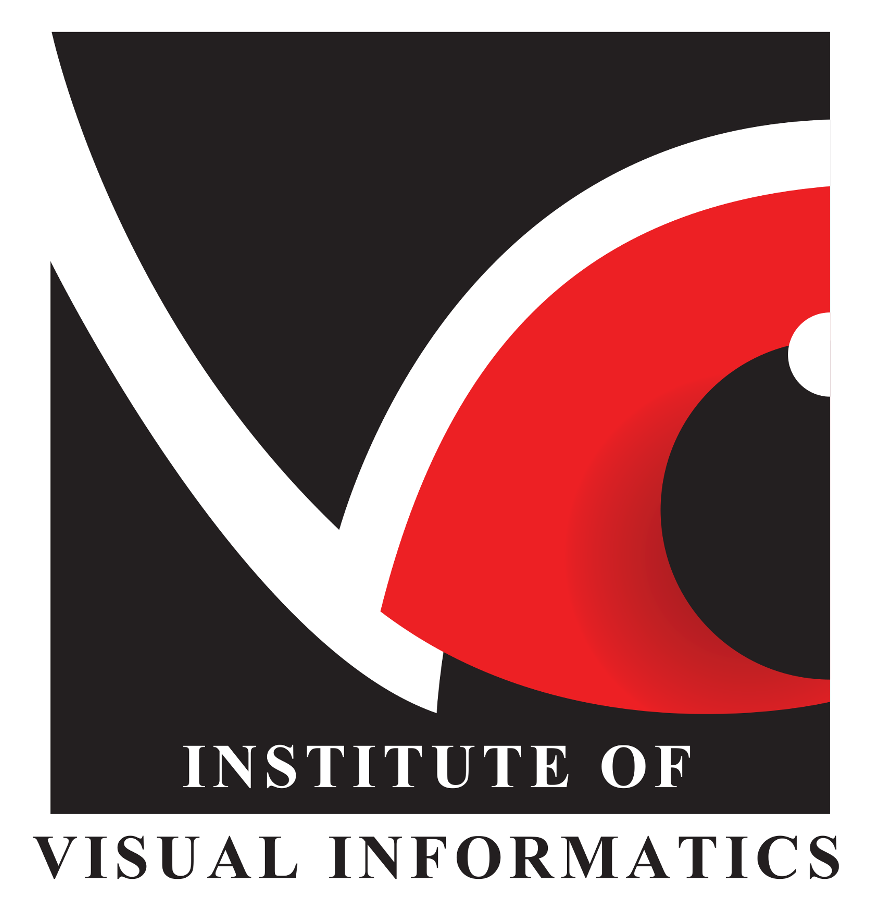The Implementation of the K-Medoid Clustering for Grouping Hearing Loss Function on Excessive Smartphone Use
DOI: http://dx.doi.org/10.30630/joiv.7.4.01873
Abstract
Keywords
Full Text:
PDFReferences
J. H. V. Caracol, B. Alturas, and A. Martins, “A society ruled by the impact of the smartphone: Influence that the use of the smartphone has in people’s daily lives,” in Iberian Conference on Information Systems and Technologies, CISTI, 2019, vol. 2019-June, doi: 10.23919/CISTI.2019.8760845.
G. J. Wang et al., “Technical report: A new device attached to a smartphone for objective vision screening,” Optom. Vis. Sci., vol. 98, no. 1, 2021, doi: 10.1097/OPX.0000000000001621.
M. Gertz, S. Schütz-Bosbach, and S. Diefenbach, “Smartphone and the self: Experimental investigation of self-incorporation of and attachment to smartphones,” Multimodal Technol. Interact., vol. 5, no. 11, 2021, doi: 10.3390/mti5110067.
В. П. Шейнов and Н. В. Дятчик, “PSYCHOLOGICAL STATES AND PROPERTIES OF THE PERSONALITY HAVING DEPENDENCE ON THE SMARTPHONE,” Pedagog. Rev., no. 6(40), 2021, doi: 10.23951/2307-6127-2021-6-225-235.
S. Kumari, “A study of the impact of electronic devices on the lifestyle of secondary school students.,” Int. J. Humanit. Eng. Sci. Manag., vol. 4, no. 1, 2023, doi: 10.59364/ijhesm.v4i1.228.
A. S. M. Duarte et al., “Audiogram comparison of workers from five professional categories,” Biomed Res. Int., vol. 2015, 2015, doi: 10.1155/2015/201494.
Z. Musiba, “Classification of audiograms in the prevention of noise-induced hearing loss: A clinical perspective,” South African J. Commun. Disord., vol. 67, no. 2, pp. 1–5, 2020, doi: 10.4102/sajcd.v67i2.691.
R. Guo, R. Liang, Q. Wang, and C. Zou, “Hearing loss classification algorithm based on the insertion gain of hearing aid,” Multimed. Tools Appl., vol. 82, no. 26, 2023, doi: 10.1007/s11042-023-14886-0.
T. Li, M. Zhang, Y. Li, E. Lagerspetz, S. Tarkoma, and P. Hui, “The Impact of Covid-19 on Smartphone Usage,” IEEE Internet Things J., vol. 8, no. 23, 2021, doi: 10.1109/JIOT.2021.3073864.
E. Łuszczki et al., “Children’s eating habits, physical activity, sleep, and media usage before and during COVID-19 pandemic in Poland,” Nutrients, vol. 13, no. 7, 2021, doi: 10.3390/nu13072447.
S. E. Narayanan and P. Manjula, “Effect of Compression Type and Number of Channels on Speech Perception in Quiet in Listeners with Different Audiogram Configurations,” Audit. Vestib. Res., vol. 31, no. 3, pp. 218–231, 2022, doi: 10.18502/avr.v31i3.9872.
M. Ohsaki, P. Wang, K. Matsuda, S. Katagiri, H. Watanabe, and A. Ralescu, “Confusion-matrix-based kernel logistic regression for imbalanced data classification,” IEEE Trans. Knowl. Data Eng., vol. 29, no. 9, pp. 1806–1819, 2017, doi: 10.1109/TKDE.2017.2682249.
E. Herman, K. E. Zsido, and V. Fenyves, “Cluster Analysis with K-Mean versus K-Medoid in Financial Performance Evaluation,” Appl. Sci., vol. 12, no. 16, 2022, doi: 10.3390/app12167985.
M. Nigar Shumaila, “A Comparison of K-Means and Mean Shift Algorithms,” Int. J. Theor. Appl. Math., vol. 7, no. 5, 2021, doi: 10.11648/j.ijtam.20210705.12.
N. K. Kaur, U. Kaur, and D. Singh, “K-Medoid Clustering Algorithm-A Review K-Medoid Clustering Algorithm- A Review.”
S. Mousavi, F. Z. Boroujeni, and S. Aryanmehr, “Improving customer clustering by optimal selection of cluster centroids in K-means and K-medoids algorithms,” J. Theor. Appl. Inf. Technol., vol. 8, no. 10, 2020.
P. K. Bhuyan and K. V. Krishna Rao, “Defining LOS criteria of urban streets using GPS data: K-means and k-medoid clustering in Indian context,” Transport, vol. 27, no. 2, pp. 149–157, 2012, doi: 10.3846/16484142.2012.692354.
A. Bhat, “K-Medoids Clustering Using Partitioning Around Medoids for Performing Face Recognition,” Int. J. Soft Comput. Math. Control, vol. 3, no. 3, pp. 1–12, 2014, doi: 10.14810/ijscmc.2014.3301.
T. Velmurugan and T. Santhanam, “Computational complexity between K-means and K-medoids clustering algorithms for normal and uniform distributions of data points,” J. Comput. Sci., vol. 6, no. 3, pp. 363–368, 2010, doi: 10.3844/jcssp.2010.363.368.
R. Alqaisi, W. Ghanem, and A. Qaroush, “Extractive Multi-Document Arabic Text Summarization using Evolutionary Multi-Objective Optimization with K-medoid Clustering,” IEEE Access, vol. 8, 2020, doi: 10.1109/ACCESS.2020.3046494.
I. Markoulidakis, G. Kopsiaftis, I. Rallis, and I. Georgoulas, “Multi-Class Confusion Matrix Reduction method and its application on Net Promoter Score classification problem,” ACM Int. Conf. Proceeding Ser., pp. 412–419, 2021, doi: 10.1145/3453892.3461323.
C. S.Dangare and S. S. Apte, “Improved Study of Heart Disease Prediction System using Data Mining Classification Techniques,” Int. J. Comput. Appl., vol. 47, no. 10, pp. 44–48, 2012, doi: 10.5120/7228-0076.
S. Daneshtalab and H. Rastiveis, “Decision level fusion of orthophoto and Lidar data using confusion matrix information for lnad cover classification,” Int. Arch. Photogramm. Remote Sens. Spat. Inf. Sci. - ISPRS Arch., vol. 42, no. 4W4, pp. 59–64, 2017, doi: 10.5194/isprs-archives-XLII-4-W4-59-2017.
V. M. Patro and M. Ranjan Patra, “Augmenting Weighted Average with Confusion Matrix to Enhance Classification Accuracy,” Trans. Mach. Learn. Artif. Intell., vol. 2, no. 4, 2014, doi: 10.14738/tmlai.24.328.
S. Defiyanti, M. Jajuli, and N. Rohmawati, “K-Medoid Algorithm in Clustering Student Scholarship Applicants,” Sci. J. Informatics, vol. 4, no. 1, pp. 27–33, 2017, doi: 10.15294/sji.v4i1.8212.
P. Arora, Deepali, and S. Varshney, “Analysis of K-Means and K-Medoids Algorithm for Big Data,” Phys. Procedia, vol. 78, no. December 2015, pp. 507–512, 2016, doi: 10.1016/j.procs.2016.02.095.
P. Breiding, F. Sottile, and J. Woodcock, “Euclidean Distance Degree and Mixed Volume,” Found. Comput. Math., vol. 22, no. 6, 2022, doi: 10.1007/s10208-021-09534-8.
F. Rahmad, Y. Suryanto, and K. Ramli, “Performance Comparison of Anti-Spam Technology Using Confusion Matrix Classification,” IOP Conf. Ser. Mater. Sci. Eng., vol. 879, no. 1, 2020, doi: 10.1088/1757-899X/879/1/012076.
M. Heydarian, T. E. Doyle, and R. Samavi, “MLCM: Multi-Label Confusion Matrix,” IEEE Access, vol. 10, pp. 19083–19095, 2022, doi: 10.1109/ACCESS.2022.3151048.
S. C. Kim and Y. S. Cho, “Predictive System Implementation to Improve the Accuracy of Urine Self-Diagnosis with Smartphones: Application of a Confusion Matrix-Based Learning Model through RGB Semiquantitative Analysis,” Sensors, vol. 22, no. 14, 2022, doi: 10.3390/s22145445.



